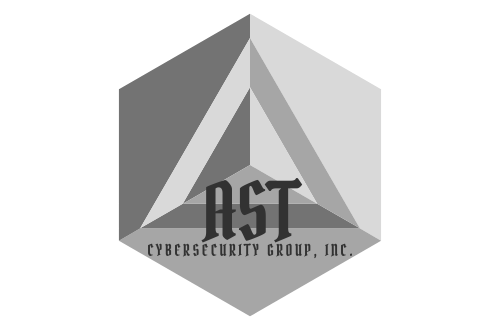In today’s digital age, workplace cyberbullying has become a growing concern for organizations around the world. With the rise of technology and the increasing reliance on digital communication, instances of cyberbullying within the workplace have become alarmingly common. But who is truly to blame for this toxic behavior? In this blog post, we will delve into the various factors that contribute to workplace cyberbullying and explore the roles and responsibilities of both employees and management in preventing and addressing this issue. From understanding the motivations behind employee-initiated cyberbullying to examining the impact of organizational culture, we will uncover the root causes and potential solutions to combat this harmful phenomenon. Additionally, we will explore the legal implications of workplace cyberbullying and shed light on the consequences that perpetrators may face, as well as the legal protections available to victims. Join us as we navigate the complex landscape of workplace cyberbullying and seek to find answers to the pressing question of who is ultimately accountable for this damaging behavior.
Understanding Cyberbullying in the Workplace
Cyberbullying in the workplace refers to the use of digital platforms and technology to harass, intimidate, or humiliate colleagues or employees. It can take various forms, including sending offensive emails, spreading rumors or false information online, posting derogatory comments on social media, or sharing inappropriate content. Understanding the dynamics of workplace cyberbullying is crucial in addressing this issue effectively.
- Definition of Workplace Cyberbullying: Begin by providing a clear definition of workplace cyberbullying. Explain that it involves repeated, intentional, and harmful acts of aggression or harassment using digital means.
- Types of Cyberbullying: Discuss the different forms of cyberbullying that can occur in the workplace. This may include online harassment, cyberstalking, impersonation, or the creation of hostile online environments.
- Psychological Impact: Explore the psychological impact of cyberbullying on the victims. Discuss how it can lead to stress, anxiety, depression, and decreased job satisfaction. Emphasize the importance of addressing cyberbullying to maintain a healthy work environment.
- Prevalence of Workplace Cyberbullying: Present statistics and studies that highlight the prevalence of cyberbullying in the workplace. Discuss how it affects both employees and organizations as a whole, leading to decreased productivity, increased turnover rates, and damage to the company’s reputation.
- Characteristics of Workplace Cyberbullies: Examine the characteristics and motivations of individuals who engage in workplace cyberbullying. Explore factors such as power imbalances, personal insecurities, or a desire for control and dominance.
- The Role of Technology: Highlight the role of technology in facilitating workplace cyberbullying. Discuss how the anonymity and ease of communication provided by digital platforms contribute to the prevalence and intensity of cyberbullying incidents.
By gaining a comprehensive understanding of workplace cyberbullying, we can take the necessary steps to address this issue effectively and create a safe and respectful work environment for all employees.

The Role of Employees in Workplace Cyberbullying
Workplace cyberbullying is not solely the responsibility of management or the organization. Employees themselves play a significant role in either perpetuating or preventing cyberbullying incidents. In this section, we will explore the various aspects of employee involvement in workplace cyberbullying, including the motivations behind their actions, the consequences they may face, and strategies to prevent such behavior.
- Why Employees Engage in Cyberbullying: Discuss the reasons why employees may engage in cyberbullying behavior. This can include factors such as personal conflicts, jealousy, competition, or a desire to assert power and control.
- Consequences of Employee-Initiated Cyberbullying: Outline the potential consequences that employees may face when engaging in workplace cyberbullying. These consequences can range from disciplinary action, negative performance evaluations, damage to their professional reputation, and even legal repercussions.
- Preventing Cyberbullying Among Employees: Provide strategies and best practices to prevent cyberbullying among employees. This can include promoting awareness through training programs, fostering a culture of respect and inclusivity, establishing clear policies and guidelines, and encouraging open communication channels.
- Encouraging Reporting and Support: Highlight the importance of creating a supportive environment where employees feel comfortable reporting incidents of cyberbullying. Discuss the role of managers and HR departments in encouraging and providing appropriate support to victims.
- Promoting Digital Etiquette: Emphasize the significance of promoting digital etiquette among employees. This includes educating employees on responsible online behavior, respecting boundaries, and understanding the impact of their words and actions in the digital realm.
By addressing the role of employees in workplace cyberbullying, organizations can empower their workforce to actively participate in creating a positive and respectful work environment, free from the damaging effects of cyberbullying.
The Responsibility of Managers and Supervisors in Preventing Workplace Cyberbullying
Managers and supervisors play a crucial role in preventing and addressing workplace cyberbullying. They are responsible for creating a safe and inclusive work environment where employees feel supported, respected, and protected from cyberbullying incidents. In this section, we will explore the specific responsibilities of managers and supervisors in addressing workplace cyberbullying, including recognizing signs, taking appropriate steps when incidents occur, and utilizing tools to prevent such behavior.
- Recognizing Signs of Cyberbullying: Provide guidance on how managers and supervisors can recognize signs of cyberbullying within their teams. This can include changes in behavior, increased absenteeism, decreased productivity, or reports of online harassment.
- Steps to Take When Cyberbullying Occurs: Outline the necessary steps that managers and supervisors should take when cyberbullying incidents are reported or identified. This can include conducting thorough investigations, documenting evidence, providing support to the victim, and taking appropriate disciplinary actions against the perpetrator.
- Tools for Managers to Prevent Cyberbullying: Discuss the tools and resources available to managers and supervisors to prevent workplace cyberbullying. This can include implementing effective policies and procedures, conducting regular training sessions on digital etiquette and respectful communication, and fostering an open-door policy for reporting incidents.
- Promoting a Positive Work Culture: Emphasize the role of managers and supervisors in creating a positive work culture that discourages cyberbullying. This can involve encouraging teamwork, promoting open and transparent communication, setting clear expectations for behavior, and leading by example.
- Collaboration with HR and Legal Departments: Highlight the importance of collaboration between managers, supervisors, and HR and legal departments in addressing workplace cyberbullying. Discuss the role of HR in providing guidance, support, and resources, as well as the legal implications and considerations managers should be aware of.
By fulfilling their responsibilities, managers and supervisors can create a work environment that fosters respect, inclusivity, and professionalism, effectively preventing and addressing workplace cyberbullying incidents.

The Impact of Organizational Culture on Workplace Cyberbullying
The organizational culture within a workplace has a significant impact on the occurrence and prevalence of workplace cyberbullying. The values, norms, and behaviors that are promoted within an organization can either contribute to the prevention of cyberbullying or inadvertently enable its occurrence. In this section, we will explore the influence of organizational culture on workplace cyberbullying and discuss strategies for creating a positive work culture that discourages such behavior.
- How Culture Influences Cyberbullying: Discuss how the organizational culture can influence the occurrence of workplace cyberbullying. Explore factors such as hierarchical structures, competition-driven environments, lack of communication channels, or tolerance for uncivil behavior that may contribute to the prevalence of cyberbullying incidents.
- Creating a Positive Work Culture: Provide guidance on fostering a positive work culture that discourages cyberbullying. This includes promoting open communication, respect for diversity, collaboration, and teamwork. Emphasize the importance of aligning organizational values with behavior expectations.
- The Role of Policies and Procedures in Preventing Cyberbullying: Discuss the significance of having clear policies and procedures in place to address workplace cyberbullying. This includes establishing guidelines for appropriate online behavior, outlining reporting mechanisms, and outlining the consequences for engaging in cyberbullying.
- Promoting Ethical Leadership: Highlight the role of leaders within the organization in shaping the culture and preventing workplace cyberbullying. Discuss the importance of ethical leadership, setting a positive example, and addressing instances of cyberbullying promptly and effectively.
- Encouraging Employee Engagement and Feedback: Emphasize the importance of engaging employees and seeking their feedback in shaping the organizational culture. This can be done through surveys, focus groups, or regular feedback sessions to understand their experiences and perceptions regarding workplace cyberbullying.
By focusing on creating a positive work culture that values respect, inclusivity, and open communication, organizations can effectively prevent and mitigate workplace cyberbullying incidents. Employees will feel supported and empowered to speak up against such behavior, leading to a healthier and more productive work environment.
Legal Implications of Workplace Cyberbullying
Workplace cyberbullying not only has detrimental effects on individuals and organizations but also carries legal implications. It is essential for both employees and employers to understand the legal consequences associated with cyberbullying incidents. In this section, we will explore the legal aspects of workplace cyberbullying, including the consequences for the perpetrators, the potential legal liability of the company, and the legal protections available for victims.
- Legal Consequences for the Perpetrators: Discuss the potential legal consequences that individuals engaging in workplace cyberbullying may face. This can include civil lawsuits for defamation, invasion of privacy, intentional infliction of emotional distress, or harassment. Explore relevant case studies or legal precedents to illustrate the severity of these consequences.
- The Company’s Legal Liability: Examine the potential legal liability of the company or organization in cases of workplace cyberbullying. Discuss how employers can be held responsible for failing to prevent or address cyberbullying incidents, leading to claims of negligence, hostile work environment, or violation of employment laws.
- Legal Protections for Victims of Cyberbullying: Explore the legal protections available to victims of workplace cyberbullying. This can include anti-discrimination laws, labor laws, and harassment policies that provide avenues for reporting incidents, seeking legal remedies, or obtaining restraining orders against the perpetrators.
- Importance of Robust Policies and Procedures: Highlight the significance of implementing robust policies and procedures to address workplace cyberbullying. Discuss the role of HR departments and legal counsel in developing comprehensive policies that outline the consequences for engaging in cyberbullying and provide clear reporting mechanisms for victims.
- Educating Employees about Legal Implications: Emphasize the importance of educating employees about the legal implications of workplace cyberbullying. This can be achieved through training programs, workshops, or informational sessions that raise awareness about the potential legal consequences for both the perpetrators and the organization.
By understanding the legal implications of workplace cyberbullying, organizations can take proactive measures to prevent such incidents, protect their employees, and mitigate potential legal risks. Employees will also be aware of their rights and responsibilities, fostering a respectful and compliant work environment.
Contact AST Cybersecurity today to learn more about cyberbullying in the workplace and more!

